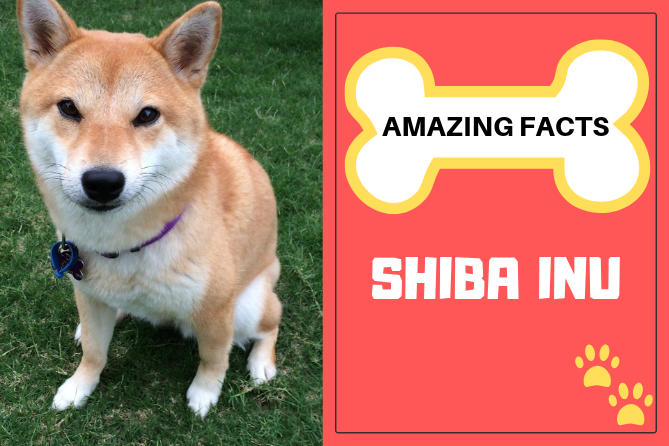
Here are some fun and fascinating facts about the Shiba Inus that will surely surprise a lot of people!
By now, we all know that the term “inu” means “dog” in Japanese, but no one knows the true or exact reason as to why these dogs were named as “Shiba.” Many people believe this name is based after the leaves of a shrub or a tree called Brushwood which turns red in the autumn season and it becomes very similar to the color of the coat that these canines have and as Shiba means Brushwood in Japanese, this theory has become fairly popular over the course of time. There is another theory that can explain the origin of this breed’s name and it states that the term Shiba means “small” in some regions of Japan and as these canines have a small and compact outer structure, this name perfectly suits their appearance and built.
While breeds like Akita, Kai Ken, Shikoku are all immensely loved by the Japanese people, Shiba Inus are known to have acquired a special place in the hearts of most people living in the land of rising sun. Shibas are extremely adored in Japan and according to the AKC, they are the most popular companion dog in the country and are considered to be perfect canines for a family residing in Japan.
Shibas have a habit of cleaning themselves whenever they feel it is necessary and they do this by licking their paws and dusting them off at several points in a day. They also have a somewhat dirt-repelling coat which also helps in keeping these dogs extremely clean and neat. And, that is why Shibas are the kind of canines that don’t require a lot of baths or cleaning from their owners to look good and pristine.
This is an immensely ancient breed whose first ancestors probably arrived in Japan in 7000 B.C. These canines after developing and thriving in Japan for a long time started breeding with the pooches who came along to Japan with the new immigrants in 300 B.C. The result of this breeding led to the formation of the new breed which we now know as Shiba Inu.
Once this breed was developed, these canines started to get used for hunting purposes. They were good at hunting both small and large games and were also used for hunting small birds. Their main task was to track and force the wild animals and birds to leave their hiding places so that their owners, the hunters, could easily aim and shoot their targets.
Based on the regions where they were developed, there were three different kinds of Shibas which were the Mino, the Sanin, and the Shinshu. But due to after effects of World War II and the severe shortage of food that came along with it, these three types of Shibas were almost wiped out and this breed was on the verge of extinction. But, due to the collective effort of several dedicated breeders who used these three Shiba-strains to recreate the breed, Shiba Inu saw a revival and this led to the formation of modern-day Shiba canines that we know and adore today. And, while all the three bloodlines were used to recreate the Shibas, most of the canines that we see today are more closely related to the Shinshu kind.
Considering its ancientness, this breed is pretty new to the U.S. Shibas first arrived in America in the year 1954, but they started to become more and more popular only after they were recognized by the American Kennel Club and that took place in 1992 which is less than 30 years from now.
The Japanese only needs three words to describe the character and temperament of a Shiba Inu. The first word is “Kan-i” which is used to describe the bravery, alertness, and confidence that a Shiba possesses. The second word is “Ryosei” which refers to the loyalty, obedience and the good nature for which Shibas are known for. And, the final word that the Japanese use to describe a Shiba is “Sobuku” which points towards its simplicity, natural good looks, and modest spirit.
A Shiba Inu named Mari saved the life of her puppies and her owner when her house collapsed due to an Earthquake in 2004. She was able to carry her pups to a safe place and then woke her owner up who was lying unconscious. When the helicopter arrived to evacuate the area, Mari’s owner was forced to leave her and the pups behind. But, when the owner returned to the affected site after two weeks, he witnessed a miracle as he found Mari and her pups all alive and well. And, this heroic tale of Mari inspired the making of a Japanese movie that was titled “A Tale of Mari and Her Three Puppies.”
Sometimes, when Shibas are unhappy or they feel they are being provoked or mistreated, these canines are known to scream very loudly in an incredibly high-pitched tone. This mostly occurs during bathing sessions or when they are getting their nails trimmed and it can easily startle most Shiba owners out there. This loud wail is popularly known as the “Shiba Scream.”